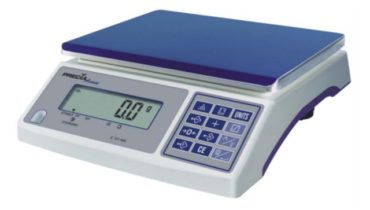We are sure that you would have questions about your ideal weight. Well, each one of us has thought about it at some point in time and the fact is that there are many factors that determine the weight of the person. These factors include the height, sex, genetics, fat and muscle composition and even the type of body frame you have. In such a case, one parameter has gained a lot of popularity over time. This parameter is called BMI or Body Mass Index.

You will notice several calculators online which will quickly calculate your BMI as soon as you enter the height and the weight (To know the height, you may like to check height measure scale). Based on this, you will get the results and these results will then determine if you have a normal weight, if you are obese, if you are overweight or if you are underweight. As per the scale, the BMI of 18.5 to 24.9 is considered to be normal. Anything below 18.5 is underweight. If you are between 25 and 29.9 then you will be considered as overweight and anything over and above 30 is considered to be as obese.
Based on the standardized metrics, we have listed a height and body chart below which will help you in determining which category you fall under.
How Much Should I Weigh for My Height
| Height | Normal (Weight in Lbs) | Overweight (Weight in Lbs) | Obese (Weight in Lbs) |
|
4 Feet 10 Inches |
91 to 118 | 119 to 142 | 143 to 186 |
| 4 Feet 11 Inches | 94 to 123 | 124 to 147 | 148 to 193 |
| 5 Feet | 97 to 127 | 128 to 152 | 153 to 199 |
| 5 Feet 1 Inches | 100 to 131 | 132 to 157 | 158 to 206 |
| 5 Feet 2 Inches | 104 to 135 | 136 to 163 | 164 to 213 |
| 5 Feet 3 Inches | 107 to 140 | 141 to 168 | 169 to 220 |
| 5 Feet 4 Inches | 110 to 144 | 145 to 173 | 179 to 227 |
| 5 Feet 5 Inches | 114 to 149 | 150 to 179 | 180 to 234 |
| 5 Feet 6 Inches | 118 to 154 | 155 to 185 | 186 to 241 |
| 5 Feet 7 Inches | 121 to 158 | 159 to 190 | 191 to 249 |
| 5 Feet 8 Inches | 125 to 163 | 164 to 196 | 197 to 256 |
| 5 Feet 9 Inches | 128 to 168 | 169 to 202 | 203 to 263 |
| 5 Feet 10 Inches | 132 to 173 | 174 to 208 | 209 to 271 |
| 5 Feet 11 Inches | 136 to 178 | 179 to 214 | 215 to 279 |
| 6 Feet | 140 to 183 | 184 to 220 | 221 to 287 |
| 6 Feet 1 Inches | 144 to 188 | 189 to 226 | 227 to 295 |
| 6 Feet 2 Inches | 148 to 193 | 194 to 232 | 233 to 303 |
| 6 Feet 3 Inches | 152 to 199 | 200 to 239 | 240 to 311 |
| 6 Feet 4 Inches | 156 to 204 | 205 to 245 | 246 to 320 |
| BMI Value | 19 to 24.9 | 25 to 29.9 |
30 to 39 |
You can now check your weight in the chart listed above and see what category you belong into. If you fall under the category of overweight then you must reduce your calories intake and you must start your daily workout. If you belong to an obese category then you are at high risk of several lifestyle diseases and you really need to start the diet and exercise right now.
BMI has one drawback as well and this drawback is that it doesn’t consider variable components like the age of the person. Apart from this, there is no major drawback and it can help you in evaluating your health easily
Conclusion
If you are overweight or obese then it is the right time to purchase a weighing machine and track your weight on a regular basis. This will help you in ensuring that you take a step ahead towards a healthy lifestyle. You can also choose to consult a dietician or a doctor if your weight is over the normal range. Tracking these things is really important as being in the normal weight range can help you in keeping several lifestyle diseases at bay. We hope the table will help you in finding the ideal weight for you and we hope that this helps you in evaluating your health.

